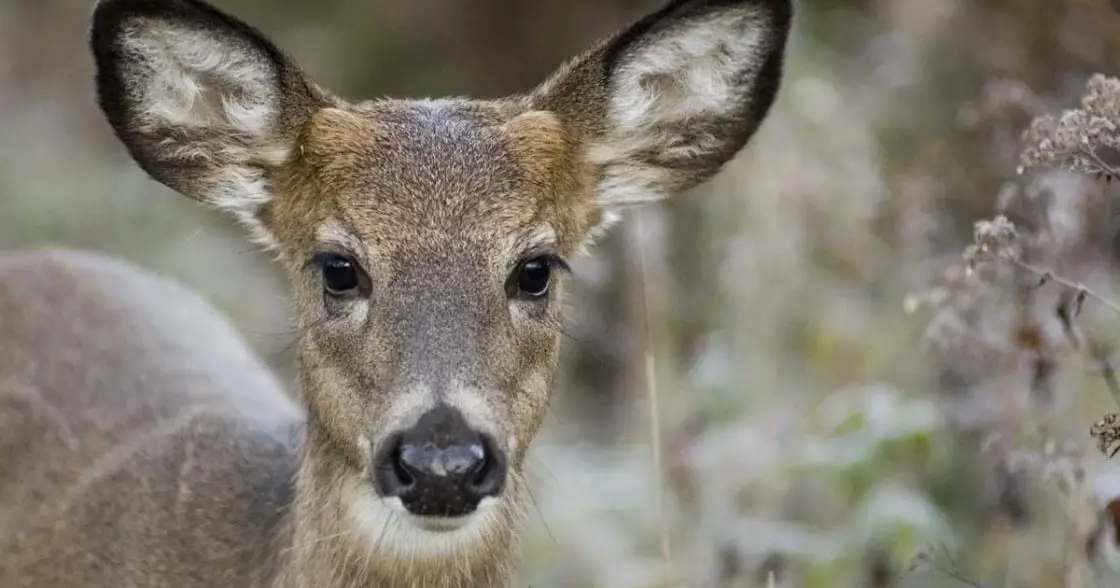There are lots of terms to learn about when you start out as a deer hunter. One of these is “button buck.” So, what is a button buck, and what differentiates it from other male deer? We’ll share the answer to that question and tell you everything you need to know about button bucks in today’s article.
A button buck is a buck younger than six months old. In other words, it is a young male fawn. Male fawns are called “button bucks” up to the age of six months old. The “button” part of the name comes from the bumps on the fawn’s head. The pedicles, the base from which the deer’s antlers will grow, look like buttons at this age.
Let’s learn more about button bucks, including whether you should avoid hunting them.
How Old is a Button Buck?
Button bucks are male young deer (or fawns) younger than six months old. A button buck is so young that it’s not yet considered a yearling.
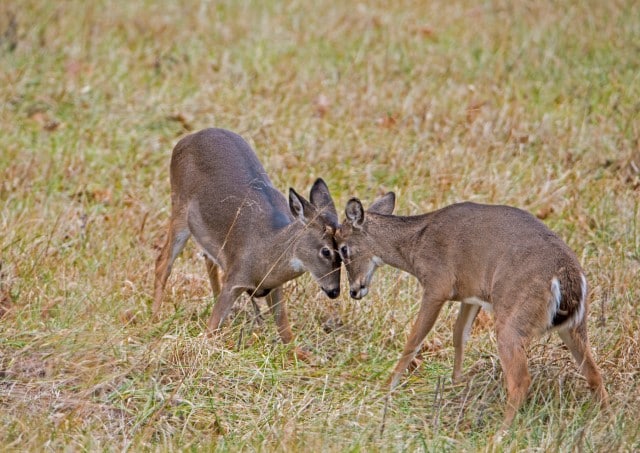
A six-month-old fawn is still quite small and has a shorter nose than full-grown animals.
A button buck with a daring personality will often be the first deer to appear in a clearing. Like other fawns, button bucks are playful and energetic.
Should You Shoot Button Bucks?
Most hunters believe you shouldn’t hunt button bucks. After all, when you shoot a young male deer, it means there will be one less antlered animal to hunt the following year.
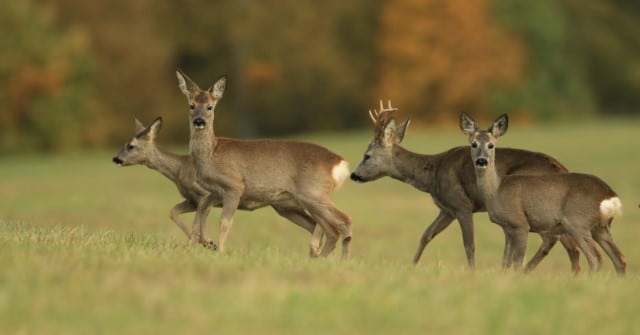
With this in mind, you shouldn’t deliberately target button bucks. Unfortunately, many hunters accidentally kill button bucks when they mistake them for does.
No matter how experienced or skilled you are in differentiating button bucks from does, you’ll likely end up harvesting some button bucks by accident.
It’s best if you try to limit button bucks to a maximum of 10 percent of your harvest of deer without antlers.
Is Hunting a Button Buck Legal?
It may not be against the law to hunt button bucks in your region, but you probably won’t want to shoot these animals. After all, you want male fawns to grow up and develop into full-grown bucks with big antlers that you can hunt.
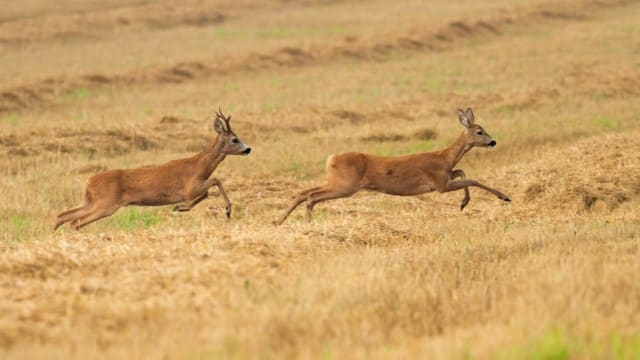
If you’re hunting during doe season and you accidentally kill a button buck (because you mistake it for a doe), this is technically against the rules but it’s a common mistake and there probably won’t be a penalty.
Button Buck vs Spike Buck
A button buck and a spike buck are two different things. As we’ve explained, a button buck is a male fawn younger than six months old that only has pedicles on its head, with no antlers having grown yet.
A spike buck, on the other hand, is older and is a yearling. Its age may range from 1 year old to 2 years old.
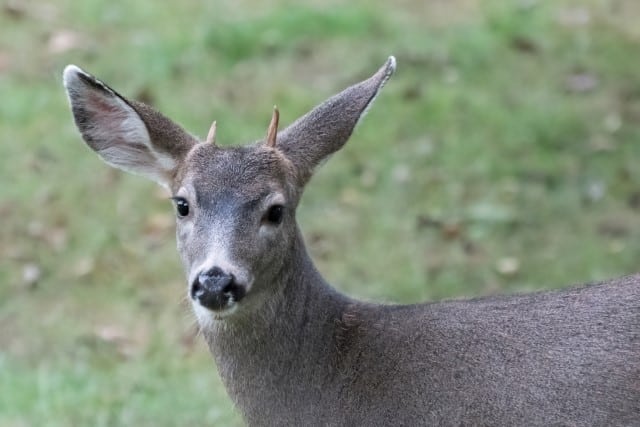
A male yearling may be considered a spike buck if his antler growth isn’t forked, thus looking like spikes.
Hunters once assumed that spike bucks would always have limitations with their antler growth. They even thought they should cull these yearlings, to prevent them from eventually breeding.
However, since then we’ve learned that spike bucks may end up developing impressive forked antlers later in life.
While it’s possible for spike bucks to have a genetic reason for their condition, in most cases poor antlers have environmental causes. For example, the animal may have received inadequate nutrition in the first year of its life.
Alternatively, its mother may have had inadequate nutrition while pregnant.
Button Buck vs Doe
As button bucks resemble does (or female deer) in their lack of antlers and relatively small size, hunters sometimes accidentally shoot them during doe hunting season.
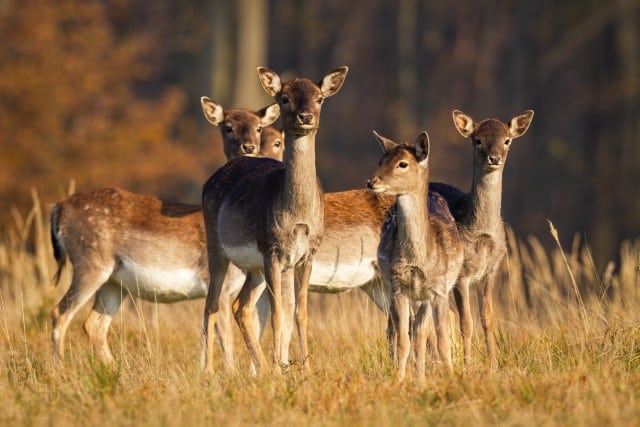
Here are some tips to help you distinguish button bucks from does.
Behavioral Differences
One way to help discern button bucks from does is to understand behavior differences. For example, does spend most of their time in groups with other deer.
If you see a deer without antlers by itself, it may well be a button buck. There are circumstances during the breeding season when fawns may be seen away from their mothers.
As adult deer with experience, does are more cautious and aware of potential danger than fawns. As fawns, button bucks are curious about the world and can be quite bold.
Face and Body Shape Differences
Also, look at the animal’s forehead. An adult female deer’s forehead is significantly larger than that of a fawn.
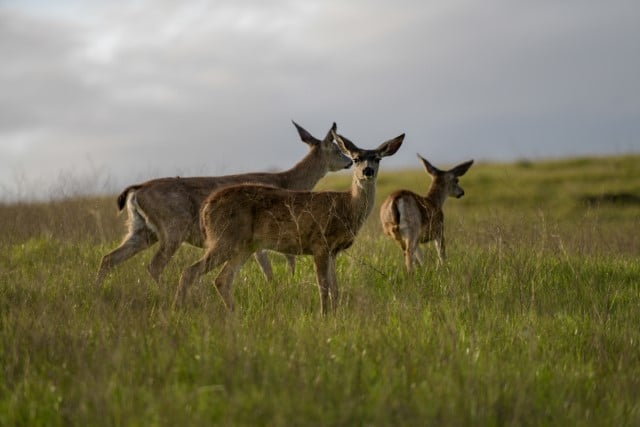
The doe’s nose is also larger. The size of a full-grown doe’s forehead may be compared to a 16-ounce soda bottle.
A button buck’s forehead will be much smaller, around the size of an 8-ounce bottle of soda. A doe also has a longer head overall.
A button buck’s body will have more of a square shape than a doe. A doe’s neck is always significantly longer than that of a fawn, such as a button buck.
Shape of the Head Matters
Of course, the pedicles (antler bases) on the button buck’s head are a sure sign that you are looking at a fawn.
The pedicles will make the male fawn’s head look flatter than it would otherwise. The space between the ears on a doe’s head, however, has a rounded appearance.
What are Pedicles?
The pedicles are the buttons on the button buck’s head. These are the places where the deer’s antlers will one day develop and grow.
The pedicles on a button buck resemble buttons because they are covered with skin. In other words, you cannot clearly see the pedicles themselves, only the bumps.
When Will a Button Buck Grow its Antlers?
A button buck will usually have to wait until he’s about 1 ½ years old before he has grown visible antlers. At this point, the yearling may have numerous antler points, or it may only have spikes.
For the years after that, the male deer will shed their antlers annually and continue to boost its antler size. A buck will generally have its maximum antler size by the age of 6 ½.
What Factors Impact Antler Growth?
Genetics and nutrition are major factors determining how well and how much a buck’s antlers will grow. Even the best genetics won’t be fully expressed if an animal doesn’t have good nutrition.
Genes impact these antler characteristics:
- Size potential
- Composition
- Shape
Nutrition is vital to antler development and growth. Phosphorus and calcium are two minerals crucial for antler growth.
Deer must have a full range of nutrients for optimal health and impressive antlers. This is why certain areas are known to product trophy bucks – they have perfect habitat conditions and food for antler development.
Why are Antlers Important?
There are many reasons why it’s important for male deer to have antlers. Let’s explore some of those reasons here.
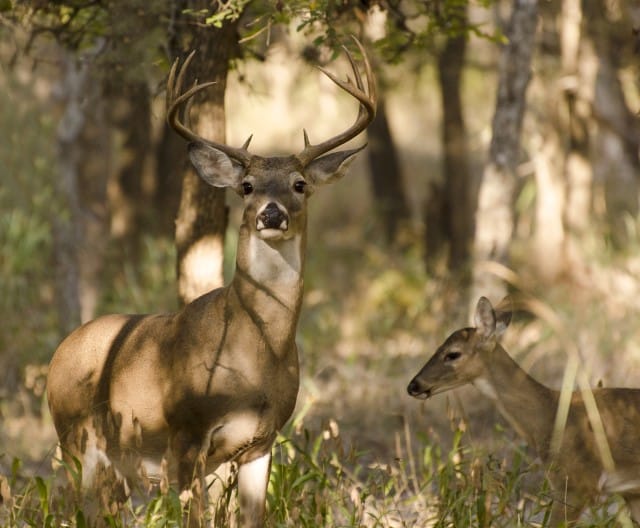
Dominance Display
This is probably the best-known purpose of deer antlers.
Male deer use their antlers when fighting for dominance with other bucks. This is where the size and strength of an animal’s antlers come in especially handy.
There is a hierarchy in deer populations, with competition being a major feature in a buck’s life. If a buck has impressively large antlers, this may be enough to dissuade other male deer from challenging him.
Compete During the Mating Season
This is related to dominance display. In fact, the major reason why male deer display their dominance is to achieve access to receptive female deer.
To Ward off Predators
In some cases, deer will use their antlers in self-defense against threats from predators. This can be effective, as antlers can be impressive weapons if used the right way.
However, using antlers as weapons against potential predators doesn’t seem to be as common as some might think.
Should You Hunt Fawns?
As we’ve learned, button bucks are fawns and it’s probably better not to shoot button bucks. That’s because if you shoot a button buck, it will never grow into a large, antlered buck for hunters to harvest.
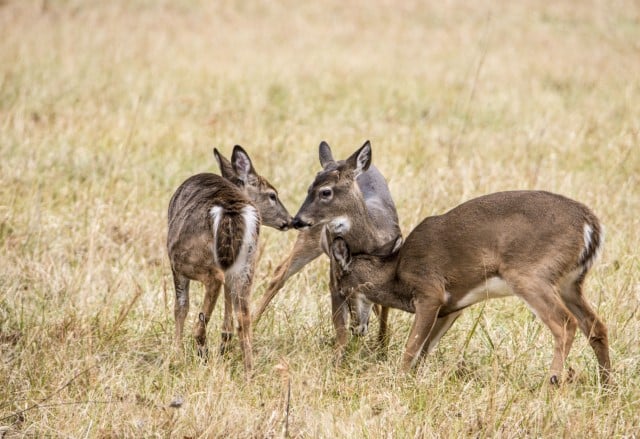
That general idea is something you should always remember.
Deer populations are adversely affected if hunters take too many fawns. This is a serious problem from both environmental and hunting perspectives.
Should You Shoot a Doe with a Fawn?
If you go deer hunting during doe season in your region, you may wonder whether you should shoot a doe if you see it with a fawn.
Most hunters won’t shoot if they see a female deer with its young offspring. This makes sense, as hunting such animals may lead to serious problems.
If a hunter shoots the doe and the fawn, that fawn will never grow up and become a full-grown deer for the population.
If you shoot the doe and don’t shoot the fawn, you may feel you are sparing it. But if the fawn is too young, it may suffer and even die if it doesn’t have its mother.
Final Thoughts On Button Bucks
Now you know what a button buck is. Put simply, it’s a male fawn younger than six months old.
It has what appear to be buttons on its head, which are the pedicles from which they will eventually grow their antlers. As we touched on earlier, it’s common for hunters to mistake button bucks for does.
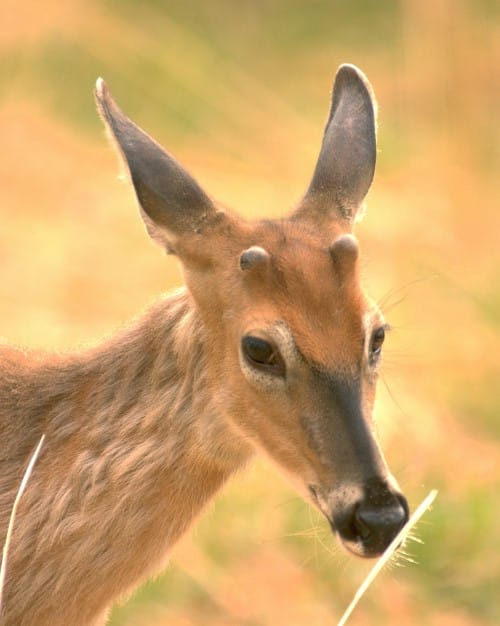
You should be aware of the differences between button bucks and deer so that you can limit the number of button bucks you accidentally harvest.
If hunters shoot too many button bucks, there will be a shortage of adult male deer later on. This is a problem not only for hunters but for the ecosystem.

